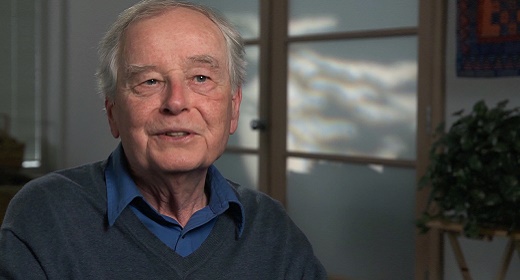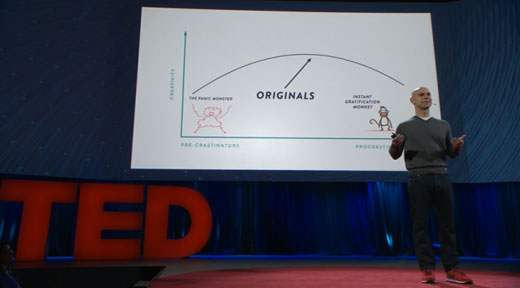by Barry Goldstein: Four ways that music affects the brain…

The field of music and neuroscience is greatly expanding and is indicating many beneficial ways music can engage and change the brain. Let’s discuss how music affects the brain and mood by engaging emotion, memory, learning and neuroplasticity, and attention. In looking at the many ways that music engages the brain, we can begin to understand how creating a consistent musical program can target and enhance certain brain functions.
1. Emotion
Research indicates that music stimulates emotions through specific brain circuits. We can easily see how music and the brain engage mood and emotion when a child smiles and begins to dance to a rhythm. He is experiencing an uplifted mood of joy from the music. We also see this when parent and child connect through song. Have you ever listened to a mother singing a lullaby to her newborn baby? It is probably one of the most significant bonding experiences between people you will ever witness.
Outside of music affecting the brain as an emotional experience, it is also a physical experience. One reason for this is a hormone related to bonding called oxytocin. The “cuddle hormone,” as it’s sometimes called, can be released by singing. No wonder music is such a profound emotional experience in the mind of both mother and child!
In addition, research indicates that music affects mood by producing an array of other beneficial molecules in our biological pharmacy.
Listening to music can create peak emotions, which increase the amount of dopamine, a specific neurotransmitter that is produced in the brain and helps control the brain’s reward and pleasure centers. We often feel emotions are experienced from our heart, but an enormous part of emotional stimulus is communicated through the brain. Our newfound understanding of how music affects the brain and heart is leading to innovative ways to utilize music and the brain to create emotional understanding between people. A study from the Journal of Music Therapy shows that using songs as a form of communication could increase emotional understanding in autistic children. The study incorporated specific songs to portray different emotions. For example, a composition by Beethoven could be used to represent sadness, or the song “Happy” by Pharrell Williams could be used to represent joy. The children could then indicate and identify emotions based on the songs that represented them. Music succeeded where verbal language failed. Music was able to bridge the brain and heart. Music evokes and engages our emotions in many stages of our lives both individually and in groups. Music can evoke the deepest emotions in people and help us process fear, grief, sadness, and resentment, even if these emotions are held on a subconscious level.
2. Memory
Imagine an elderly man in a wheelchair. His head droops down to his chest, almost in a state of unconsciousness. His name is Henry and, sadly, he is disconnected from the world around him due to severe Alzheimer’s. What might reconnect him to the world and improve his awareness?
The movie Alive Inside chronicles how music can assist in regaining parts of memory and improve the brain health and quality of life of Alzheimer’s patients. One of the caretakers in Henry’s nursing home interviews his family to find out the type of music Henry used to enjoy listening to before Alzheimer’s affected him. By creating playlists incorporating music specifically for Henry, the caretaker helps Henry reconnect with the world around him and brighten his mood. His eyes open, he is aware, and he is able to communicate. He was reconnected to his life from the music—his music.
A 2009 study from Petr Janata at the University of California, Davis found that there is a part of the brain that “associates music and memories when we experience emotionally salient episodic memories that are triggered by familiar songs from our personal past.”10 In other words, our own familiar music can reconnect people with deep, meaningful memories from their past, like it did in Henry’s case.
These principles are what we will use later to form the basis of specifically constructed playlists to evoke certain emotional responses that we wish to produce by the interaction with music and the brain.
3. Learning and Neuroplasticity
Neuroplasticity is the brain’s ability to reorganize itself by forming new neural connections throughout life, and can be greatly affected by the harmony of music and the brain. According to MedicineNet.com, “Neuroplasticity allows the neurons (nerve cells) in the brain to compensate for injury and disease and to adjust their activities in response to new situations or to changes in their environment.”
To further clarify, when our brain is damaged, it can find or create new pathways to function properly. Amazingly, music can provide the stimuli to create these new pathways and to help the brain rewire itself in the case of brain injury. For instance, in a groundbreaking study by the University of Newcastle in Australia, popular music was used to assist patients with severe brain injuries in recalling personal memories. The music affected the patients’ brains ability to reconnect to memories they previously could not access.
It’s like getting directions to a location. If a road is closed, or you are stuck in traffic, there is sometimes an alternate route to get to the same place. Music can help map that alternate route in your brain!
A great example of this is shown in the case of former congresswoman Gabrielle Giffords. Congresswoman Giffords experienced a brain injury as the result of a gunshot wound, which affected her brain language center and left her almost unable to speak. By engaging her brain through music therapy, singing, and melodic intonation, she was able to provide new information to the mind through music and create a reorganization that helped her to make the connections necessary to relearn language.
This is an extreme case, but many of us have experienced some kind of neuroplasticity in our normal lives. Neuroplasticity, simply put, is our brain’s ability to repair connections and find alternate pathways to memories, emotions, and even physical systems such as speech—and utilizing music is a wonderful way to achieve this effect.
4. Attention
Ever hear a song that engages you so profoundly it takes hold of your mind’s full attention? By engaging our brain and our attention in the right ways, music is able to activate, sustain, and improve our attention.
Using brain images of people listening to short symphonies by an obscure eighteenth-century composer, a research team from the Stanford University School of Medicine investigated the power between music and the mind to hold our attention and showed that peak brain activity occurred during a short period of silence between musical movements—when seemingly nothing was happening. This lead the researchers to theorize that listening to music could help the brain to anticipate events and hold greater attention, just as the listeners demonstrated when they seemed to pay closest attention during the anticipatory silences between musical movements.
My theory is that these silences are indeed part of each composer’s intention to guide the listener in interpreting and integrating the music in their brain. It is the space between the notes that captivates our full attention and allows the busy mind to communicate and integrate with the heart. It is in these silences, where our focus is total and complete, that true balance and healing can occur, as our brain and heart move into coherence.
On the other hand, we have all experienced how certain types of music, while affecting our mood, can also distract us or make us inattentive to tasks at hand.
This makes complete sense. Unlike the attentive silences of the previous study, some songs can negatively engage our attention, as we become part of the song’s story or scene. Lyrics are descriptive and engage our analytical mind, and lyrically heavy music could divide the attention of many people’s brains.
As we move forward in the following chapters, you will be encouraged to become an expert on using music and your brain to access targeted states. You will learn how to use music as a bridge to affect moods, relax, increase your focus, and gain motivation. What’s exciting is that you can assist your heart and brain as they move to more balanced and synchronized states using music, sound, and vibration!
Putting it Into Practice: How to Affect Your Brain and Mood With Music
Now that we have seen some of the effects that music has on the brain, let’s learn how we can take a role in implementing some of these benefits into active processes.
1. Play an Instrument
Musical improvisation, which is a spontaneous creative idea, is a perfect example of how music affects both sides of the brain. Our technical skills are utilized to play the instrument and affect the left side of the brain, while the new creative ideas or improvisation flowing through us affect the right side. In addition, we are tapping into the power of our hearts by embedding the music with our emotion. On a spiritual level, when I improvise I always feel like the ideas are flowing through me in collaboration and connection with a larger field and something outside myself. If you want to have an effect on both your brain and heart with music, improvise! This practice is not limited to just musicians; I have seen many a friend make up his or her own words to songs on karaoke night!
This skill of improvising is a powerful way music can affect your brain and mood. It can also be applied in different areas of our lives to find creative solutions and improve cognitive abilities and spontaneous thought, which in turn can assist with the challenges we face in our daily lives.
2. Sing
In addition to singing having beneficial effects for our heart, it also affects our brain as well. Keep in mind that it’s about the act of singing itself, not how well you sing! Some studies have demonstrated that singing (even bad singing!) provides emotional, social, and cognitive benefits. In addition, in later chapters we will show how music can affect your mood and can be used to improve speech function and decrease stress, anxiety, and depression.
3. Chant
For thousands of years, chanting is a form of music has been used as a vehicle to form a deeper spiritual connection in the brain and affect mood. This is especially true of the sound om, which is said to contain every sound in the universe within it.
As we chant om, we can release mind chatter through music and our focus shifts to a deeper spiritual connection. But chanting also benefits people’s physical body as well as their spiritual one!
A pioneering study revealed that chanting the word om could engage the area of the brain that is associated with calmness and a sense of inner peace. fMRIs (functional MRIs) were used to scan the brain while people chanted different sounds and syllables, including ssss and om. While chanting the sound of ssss showed no benefit, chanting om activated the area of the brain associated with a sense of peacefulness.
4. Drum
Research indicates that specific musical beats can affect your mood by inducing different brain wave frequencies and can induce a deeply relaxed state. Other studies show that participation in group drumming led to significant improvements in many aspects of social-emotional behavior. The potential of the benefits of drumming on the brain is leading to some amazing collaborations. Mickey Hart, former drummer of the Grateful Dead, paired with neuroscientist Dr. Adam Gazzaley in hopes of gaining a deeper understanding of how music directly affects different brain wave states and how it may help specific brain conditions. Dr. Gazzaley measured Hart’s brain wave activity as he played at concerts. Hart led a drum circle of over a thousand people.
It demonstrated the natural power of group rhythmic entrainment, and their findings supported recent studies that indicated how playing a musical instrument can strengthen and exercise the aging brain. We’ll discuss the benefits of drumming more later on.
Brain Wave Entrainment
Another powerful way to have an effect on the brain with music, sound, and vibration is through brain wave entrainment. Although this section gets a bit heady (excuse the pun), I invite you to stick with me and embrace your inner geek.
Heart entrainment, discussed in the previous chapter, shows how the internal rhythm of our heart can synchronize to the external rhythm of music to create more orderly, beneficial heart rhythms.
But music can also affect your mood by entraining the brain to more relaxed states, where we become more focused and attentive and can increase our cognitive abilities, sleep more soundly, and learn to meditate.
While heart entrainment is based upon synchronizing the heartbeat to specific tempos, or beats per minute, brain entrainment is based on the brain synchronizing to specific musical frequencies, which are measured in hertz (Hz).
Specific frequencies induce different states in our brain:
Beta Waves
Hertz Level: 14–40 Hz
Effect: Awake, normal alert consciousness
Example: Actively conversing or engaging in work
Alpha Waves
Hertz Level: 8–14 Hz
Effect: Calm, relaxed
Example: Meditating, reflecting, taking a break from work
Theta Waves
Hertz Level: 4–8 Hz
Effect: Deep relaxation and meditation, mental imagery
Example: Daydreaming
Delta waves
Hertz Level: 0–4 Hz
Effect: Deep, dreamless sleep
Example: Experiencing REM sleep
During our active day most of us are in beta states. We are moving at a faster pace when our attention is on our outer world (work, family, etc.), and our faster brain frequencies reflect this. As we move to more relaxed brain wave states, we fall into a calmer mood. We can induce the alpha state in our mind by closing our eyes, breathing slower, and listening to calming music.
As we travel into an even deeper state of relaxation, we move into a theta brain wave state. This can occur through meditation and also through relaxation music. It is in alpha and theta states that we tap into enhanced creative frames of mind. As our bodies progress into deep sleep, we are in delta and our brain waves have fully slowed down.
Music is a delivery system of frequency to the mind. Each note has a specific frequency, but we can also embed additional brain wave frequencies outside of the standard notes into music to allow the brain to entrain to our desired states.
When our internal brain waves are affected by the external brain wave frequencies that are contained in the music, this is called brain wave entrainment. For instance, if I were looking to move into a very creative state, I would utilize music that contains alpha and theta frequencies. If I have insomnia, I might incorporate music that contains delta frequencies.
There are many technologies that are used to induce and target the different brain frequencies, including binaural beats, isochronic beats, monaural beats, and many more. These are such keys of how music affects your mood that each type could have its own article. I invite you to investigate the pros and cons of them all and see which ones resonate with you. In addition, I am creating my own delivery system called adaptive music, which utilizes specific harmonics to accommodate the different targeted brain states.
An amazing amount of research has been done to prove the benefits of music and the brain, but we’ve only just scratched the surface. There is so much excitement and potential around integrating music as a transformative pathway to heal and improve our minds.
I am thrilled to be working with Dr. Daniel Amen, who is a double board-certified adult and child psychiatrist, author, and researcher.
We will be conducting exciting new research to determine how music may provide supportive benefits to the brain and to determine how to create and influence positive changes by selecting specific pieces of music to affect brain function.
I have also had the privilege of working with Dr. Joe Dispenza, a researcher, lecturer, and author, and have composed live music to accompany his meditations with over five hundred attendees at each workshop. During these powerful meditations, a group of participants were studied using EEG brain mapping technology to determine specific brain activity. The research showed people reached very coherent brain wave states in a very short period of time during the meditations. It is amazing to see firsthand how music and meditation can help in moving people to beneficial brain states where transformation can occur.
Knowing how to entrain both our hearts and our brains can lead us to a place of true synchronization and greatly improve our mood, where our heart and mind are seamlessly connected in constant communication through the music we listen to.
At the end of the article, I have provided examples of the types of music that induce the different brain wave states that can affect your mood to help you get started on your journey toward your own brain entrainment exercises!
As you become more familiar with the frequencies that evoke specific responses within your brain, you should feel free to branch out and find other pieces of music that can have an effect on these brain wave states.
Imagine being able to utilize the power of both your brain and heart for transformation and healing. All it takes is choosing the right set of music to affect your mood.
Sound Tools for Transformation
The suggested music below incorporates different targeted brain wave states. Review the brain wave chart in this chapter and select one of the pieces below to move you to the brain state of your choice.
+ Listen to a piece of music that brings you to a highly elevated and inspired emotional state. I love to listen to powerful instrumental music like that of Vangelis or epic soundtrack music. Moving to this music can have a profound effect on your mood as it creates the potential for the production of beneficial hormones, neurotransmitters, and other molecules in your body. For example, after listening to music, serotonin levels can increase. Serotonin is involved in the sleep-wake cycle, mood, and the control of pain perception.
+ Choose a piece of familiar music to engage your memory. Find a song that takes you back to an event that engages positive emotions. Notice how the brain not only remembers the music, but also the original emotion. Use this powerful tool on a daily basis!
This piece on how music affects the brain and mood is excerpted with permission fromTheSecret Language of the Heart by Barry Goldstein









































